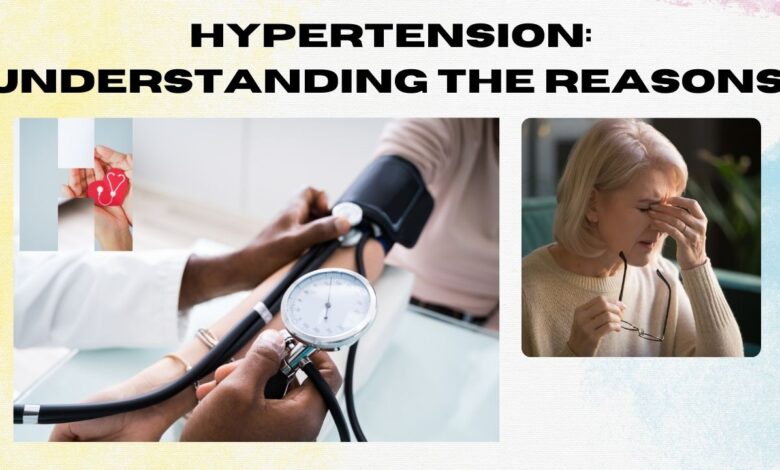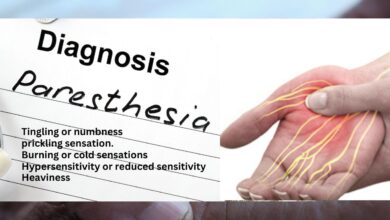
Hypertension, commonly known as high blood pressure, is a pervasive health issue affecting millions worldwide. Despite its prevalence, many people remain unaware of its causes, risk factors, and the severe health consequences it can lead to if left unmanaged. This post aims to break down the reasons behind hypertension, identify the primary culprits, and shed light on how this silent killer operates. By understanding hypertension, we can take proactive steps to manage and prevent it.
Table of Contents
Problem: The Silent Threat of Hypertension
Hypertension is often dubbed the “silent killer” because it typically presents no symptoms until significant damage has occurred. This characteristic makes it particularly dangerous, as individuals can have high blood pressure for years without knowing it. During this time, the condition can cause severe damage to the heart, kidneys, and other vital organs.
The Global Impact
According to the World Health Organization (WHO), an estimated 1.13 billion people worldwide have hypertension, with two-thirds living in low- and middle-income countries. The condition is responsible for approximately 7.5 million deaths annually, accounting for about 12.8% of all deaths globally. These statistics underscore the critical need for increased awareness and intervention.
Health Consequences
Hypertension significantly increases the risk of cardiovascular diseases, including heart attack, stroke, and heart failure. It is also a leading cause of chronic kidney disease and can contribute to vision loss and cognitive decline. The damage caused by hypertension is cumulative, meaning the longer it remains uncontrolled, the greater the risk of severe health outcomes.
Agitation: The Hidden Factors Fueling Hypertension
Understanding the underlying reasons behind hypertension is crucial for effective prevention and management. Several factors contribute to the development of high blood pressure, ranging from lifestyle choices to genetic predispositions.
Lifestyle Factors
- Diet: High sodium intake is one of the most well-documented dietary risk factors for hypertension. Excessive salt consumption can cause the body to retain water, increasing blood volume and pressure. Additionally, diets high in saturated fats and low in fruits and vegetables contribute to the development of high blood pressure.
- Physical Inactivity: A sedentary lifestyle is a significant risk factor for hypertension. Regular physical activity helps maintain healthy blood pressure levels by strengthening the heart and improving blood flow. Lack of exercise, on the other hand, can lead to weight gain and increased blood pressure.
- Obesity: There is a strong correlation between obesity and hypertension. Excess body weight increases the workload on the heart, leading to higher blood pressure. Obesity is also associated with other conditions that contribute to hypertension, such as diabetes and sleep apnea.
- Alcohol and Tobacco Use: Excessive alcohol consumption can raise blood pressure and contribute to hypertension. Similarly, smoking damages blood vessels and accelerates the hardening of arteries, leading to increased blood pressure.
Genetic and Biological Factors
- Family History: Hypertension often runs in families, indicating a genetic predisposition. If your parents or other close relatives have high blood pressure, you are more likely to develop it.
- Age and Gender: The risk of hypertension increases with age. Men are generally at higher risk until about age 64, after which the risk is higher in women. This shift is believed to be related to hormonal changes during menopause.
- Ethnicity: Certain ethnic groups are more prone to hypertension. For example, African Americans are at a higher risk and tend to develop hypertension at younger ages compared to other ethnicities. They also experience more severe complications from the condition.
Environmental and Socioeconomic Factors
- Stress: Chronic stress can contribute to hypertension by causing temporary spikes in blood pressure and prompting unhealthy behaviors such as overeating, smoking, or alcohol use.
- Socioeconomic Status: Lower socioeconomic status is associated with higher rates of hypertension. This relationship is likely due to a combination of factors, including limited access to healthcare, unhealthy diets, and higher levels of stress.
Solution: Identifying and Addressing the Main Culprits
Addressing hypertension effectively requires a multi-faceted approach that targets its various causes. Here, we delve into some strategies and interventions to manage and prevent high blood pressure.
Dietary Interventions
- Reducing Sodium Intake: Limiting salt consumption is crucial in managing hypertension. The American Heart Association recommends no more than 2,300 milligrams (mg) of sodium per day, ideally reducing it to 1,500 mg for most adults.
- Adopting the DASH Diet: The Dietary Approaches to Stop Hypertension (DASH) diet is designed specifically to combat high blood pressure. It emphasizes fruits, vegetables, whole grains, and low-fat dairy products while limiting saturated fats and cholesterol.
Increasing Physical Activity
Regular physical activity is one of the most effective ways to prevent and manage hypertension. Aim for at least 150 minutes of moderate-intensity exercise, such as brisk walking or cycling, per week. Physical activity helps reduce blood pressure by strengthening the heart and improving circulation.
Weight Management
Achieving and maintaining a healthy weight is critical in managing hypertension. Even a small amount of weight loss can significantly reduce blood pressure. Combining a healthy diet with regular physical activity is the most effective way to achieve sustainable weight loss.
Limiting Alcohol and Avoiding Tobacco
- Moderate Alcohol Consumption: If you drink alcohol, do so in moderation. The recommended limit is up to one drink per day for women and up to two drinks per day for men.
- Quitting Smoking: Smoking cessation is vital for reducing blood pressure and overall cardiovascular risk. Numerous resources and support systems are available to help individuals quit smoking, including counseling, medications, and nicotine replacement therapies.
Stress Management
Managing stress is an often-overlooked aspect of hypertension prevention. Techniques such as mindfulness, meditation, yoga, and deep-breathing exercises can help reduce stress and lower blood pressure. Additionally, ensuring adequate sleep and maintaining social connections are important for overall well-being.
Regular Monitoring and Medical Management
Regular blood pressure monitoring is essential for early detection and management of hypertension. Home blood pressure monitors are widely available and can help individuals track their readings. Additionally, healthcare providers may prescribe medications to manage high blood pressure. These medications, including diuretics, ACE inhibitors, and calcium channel blockers, can be highly effective when combined with lifestyle changes.
Case Study: The Impact of Lifestyle Changes on Hypertension Management
To illustrate the effectiveness of these interventions, let’s consider the case study of John, a 55-year-old male diagnosed with hypertension.
Initial Diagnosis
John’s initial blood pressure reading was 150/95 mmHg, significantly higher than the normal range of less than 120/80 mmHg. He led a sedentary lifestyle, consumed a diet high in sodium and saturated fats, and was overweight. Additionally, John experienced chronic stress from his demanding job and consumed alcohol regularly.
Intervention
John’s healthcare provider recommended a comprehensive lifestyle intervention plan:
- Dietary Changes: John adopted the DASH diet, significantly reducing his sodium intake and increasing his consumption of fruits, vegetables, and whole grains. He also cut back on red meat and incorporated more lean proteins like fish and chicken into his diet.
- Increased Physical Activity: John started a walking routine, gradually increasing to 30 minutes of brisk walking five days a week. As his fitness improved, he incorporated light jogging and strength training exercises.
- Weight Management: By combining a healthier diet with regular exercise, John managed to lose 15 pounds over six months. His BMI decreased from 28 (overweight) to 25 (upper range of normal).
- Alcohol and Tobacco: John reduced his alcohol intake to one drink per day and quit smoking with the help of a smoking cessation program.
- Stress Management: To address his stress levels, John began practicing mindfulness meditation for 10 minutes each morning and attended a weekly yoga class. He also prioritized better sleep hygiene, aiming for 7-8 hours of sleep per night.
Results
After six months of adhering to these lifestyle changes, John’s blood pressure readings significantly improved to 125/80 mmHg. His overall health and well-being also saw notable enhancements, including increased energy levels and improved mood. Most importantly, John successfully managed his hypertension without the need for medication.
Also Read:Top 10 Health Benefit of Drinking Plain Water on an Empty Stomach,How,
Conclusion: Taking Charge of Your Health
Hypertension is a serious and pervasive health issue, but it is also highly manageable with the right interventions. Understanding the reasons and main culprits behind high blood pressure is the first step toward effective prevention and management. By adopting a healthier diet, increasing physical activity, managing stress, and avoiding harmful behaviors, individuals can significantly reduce their risk of hypertension and its associated health complications.
Remember, regular monitoring and consultation with healthcare providers are essential for keeping blood pressure under control. By taking proactive steps and making informed lifestyle choices, we can combat the silent killer of hypertension and lead healthier, more fulfilling lives.




